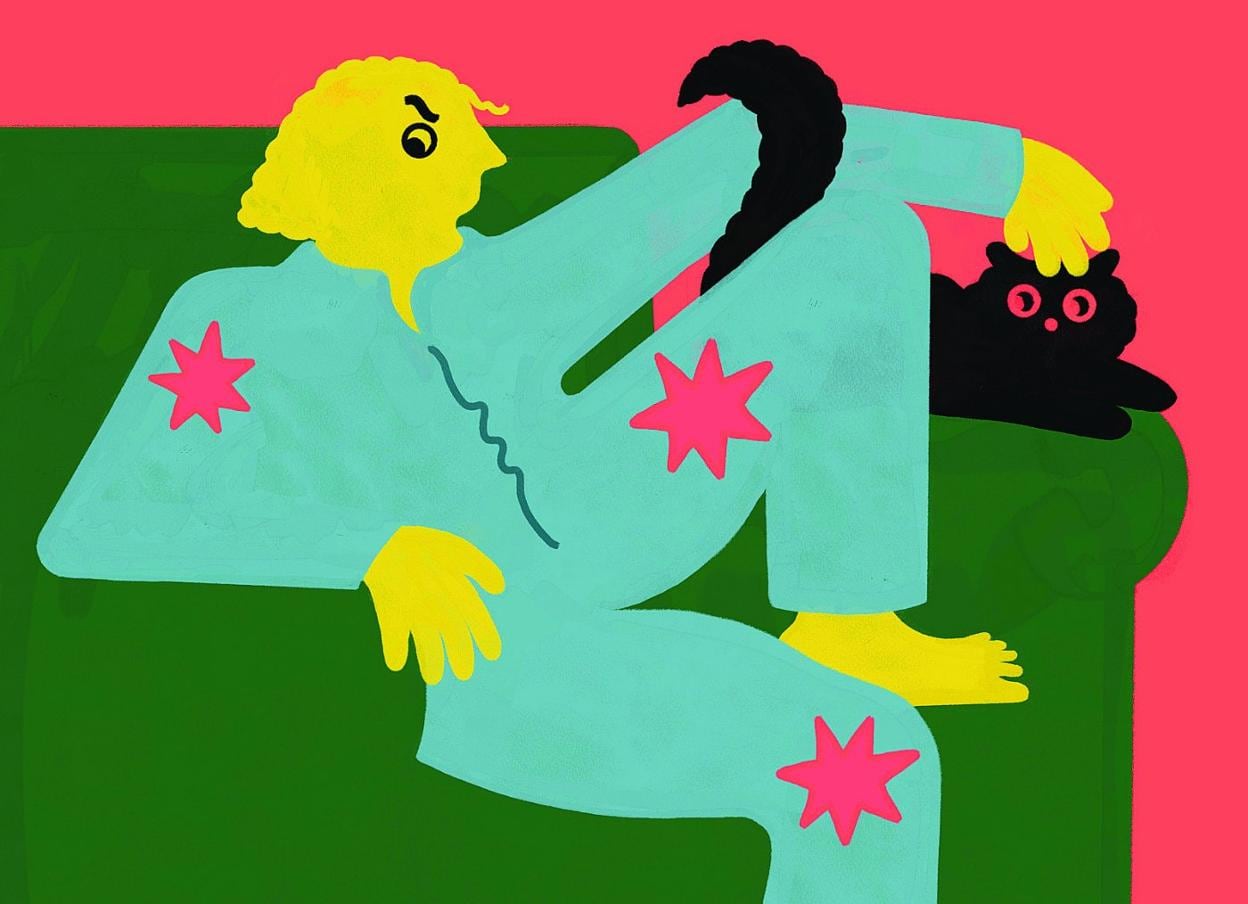A kick in the shins, an attack of lumbago... Which parts of the body are most sensitive to pain?
The intensity of pain can depend on many factors, such as genetic or hormonal issues, but there is a certain consensus regarding which parts of the body are more sensitive than others
marta fdez. vallejo
Friday, 27 May 2022
It is difficult to draw up a ranking for the intensity of pain. Doctors say it depends on many factors: genetics, hormonal, even emotional issues, and some people cope better than others. Even so, there is a certain consensus over some parts of the body which make us see stars if they suffer a blow, because they are less protected by muscle or because there are a lot of nerve endings there. There are also some pathologies that are objectively very painful. Let's take a look at these sensitive areas.
THE BACK, ONE OF THE MOST COMMON AREAS FOR PAIN
The back can become a form of torture as we get older. "Back problems are one of the most common causes of pain and are a consequence of ageing, osteoarthritis, a sedentary lifestyle and repetitive work," says Dr María Luisa Franco, a specialist in Anaesthesiology and president of the Pain section of the Academy of Medical Sciences in the Basque Country.
Eight out of every ten consultations for pain are to do with this area of the body. "In five per cent of cases, back pain becomes chronic and accounts for 80 per cent of expenditure on health in any country," she says.
Attacks of lumbago are very disabling and put our resistance to pain to the test. They can be treated, but not just with medication. "The patient has to get involved, because exercise is an essential part of the treatment," explains María Luisa Franco. "And people need to enjoy life and be happy, because that releases endorphins, which are a truly natural analgesic," she says.
THE PARTS OF THE BODY WHERE BLOWS HURT THE MOST
And where do we feel the most pain if we suffer a blow? "In general, in the least protected areas, where there are no muscles or more nerve endings are concentrated," explains Ander Álava, a specialist in Physical Medicine and Rehabilitation at the San Juan de Dios hospital in Vizcaya.
One of these extremely sensitive parts is what we know as the 'funny bone', which isn't actually a bone but a large nerve, the ulnar nerve. It is at the back of the elbow and covers the humerus all the way to the base of the hand. As there is practically no fat and muscle around the elbow, if we hit it, the pain-sensitive nerve quickly reacts. Blows to the shin –the tibia– and the knee, the coccyx or biting the tongue are also very painful, because they are so exposed, says Dr Álava.
We are used to seeing scenes in films where someone is tortured by something sharp inserted under their fingernails. There's a reason for that. A study published in the 'Annals of Neurology' magazine showed that the ends of the fingers are one of the most sensitive parts of the body, because they are full of nerve endings which send pain signals directly to the brain. And male readers might also like to add something else to the list of unbearable pain: a blow to the testicles.
Dr Álava says, however, that pain is a sensation that depends on many factors, from genetic to hormonal, emotional or even cultural. "It's a perception, an individual and unique experience, on which stress or distraction can have an influence," he says.
FROM CORNEAL ULCER TO TRIGEMINAL NEURALGIA
The cornea is another weak point. It is the most exposed structure of the eye and many sensory nerve endings are located there. A corneal ulcer is something that causes the most pain, says this specialist, and bone fractures are also one of the hardest experiences to bear, including sprained ankles, which can even make us lose consciousness. Other painful experiences: burns.
Also among the causes of the most pain is trigeminal neuralgia. "That gives terrible pain, one of the worst," says Dr Franco. It affects the trigeminal nerve, which transmits sensations from the face to the brain. A study by the Department of Pain Medicine at Stanford University came to the same conclusion: "It is the worst pain a human being can suffer". And it affects more women than men, for some reason.
The UK health system has completed its list of the most painful conditions with the following: Zoster herpes, cluster headache, nephrotic colic, herniated disc, pancreatitis and gout.
WHAT ABOUT HAIR... CAN IT HURT?
It may sometimes happen that we feel our hair is hurting. Is that possible? What we are feeling is actually the scalp, which although it is there to protect our head, can be easily affected by pain.
The reason is that this part of the body is also full of nerve endings, located at the root of the hair follicles. The natural position of the follicles is in the same direction the hair grows and that is why we sometimes feel discomfort if we brush against the direction of the hair growth.
